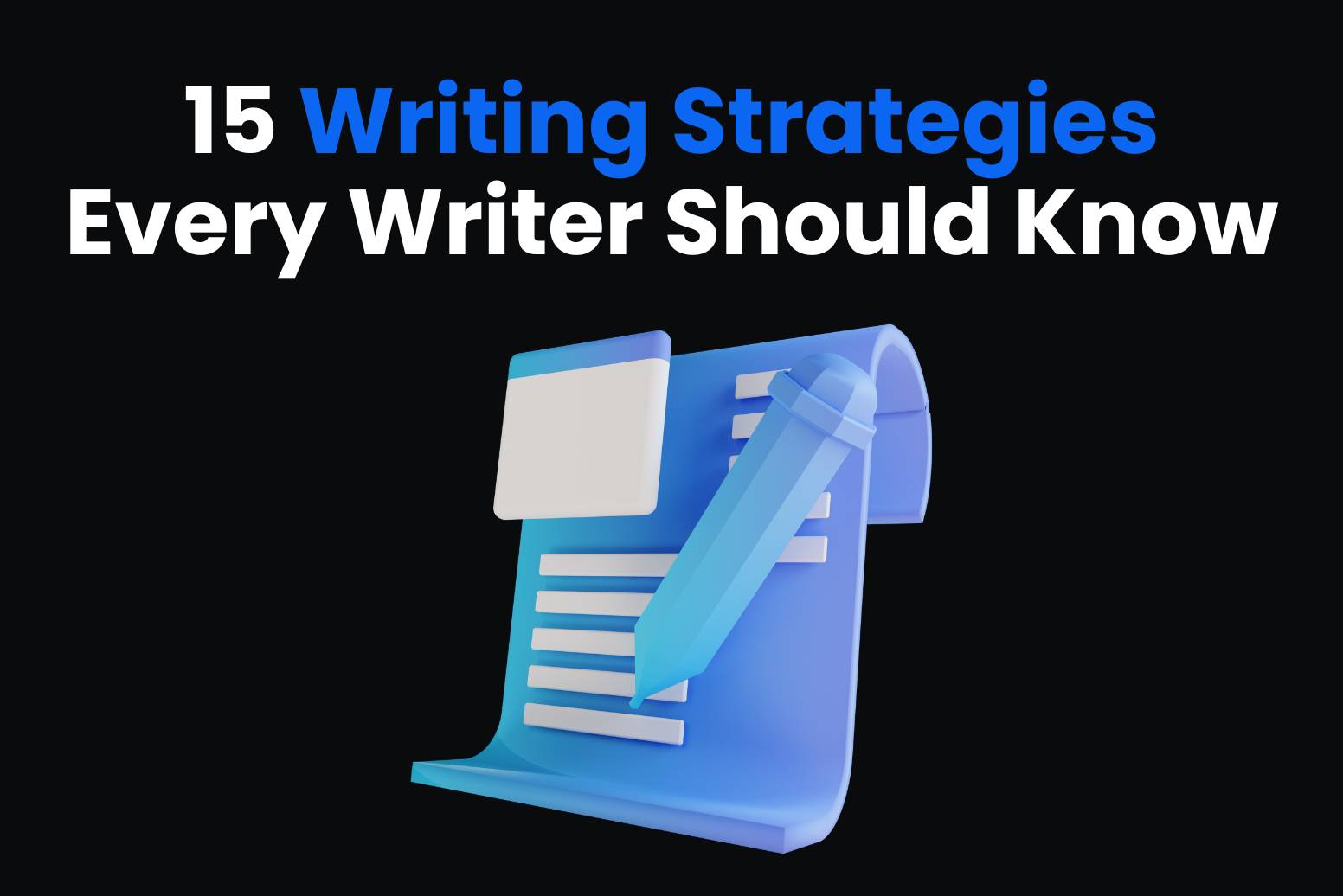Writing a movie review can feel like a challenge, especially when you’re trying to strike a balance between being informative and engaging. However, with the right approach, you can capture your thoughts and present them in a way that draws readers in while offering a compelling critique. So how to write a movie review for film critiques?
Take your love for cinema to the next level—use Arvin AI to write detailed and captivating movie reviews today!
How Do You Start Writing a Movie Review?
1. Watch the Movie with Purpose
The first step in writing a movie review is to watch the film carefully, ideally more than once. This allows you to observe details you might miss on the first viewing, such as subtle foreshadowing, background details, or nuances in an actor’s performance. Taking notes ensures you capture key moments, both positive and negative, for a well-rounded critique. So that’s how to write a movie review that resonates with your viewers.

While watching Avatar: The Way of Water, you might be struck by the immersive underwater sequences, which showcase groundbreaking visual effects. James Cameron’s meticulous attention to detail—like the fluid motion of the Na’vi as they navigate their aquatic world—creates a stunning visual experience. However, you might also notice that the film’s pacing falters in the second act, with extended scenes that feel repetitive. Observing both the technical brilliance and narrative flaws gives you a balanced starting point for your review.
2. Start With an Engaging Hook
The opening sentence of your review should immediately grab the reader’s attention. It could be a bold statement, a thought-provoking question, or an observation about the film’s cultural impact. A strong hook sets the tone and hints at your overall perspective and that’s how to write a movie review when you are considering how to write a movie review.
“Is Barbie just a colorful toy story, or does it redefine what a summer blockbuster can be? Greta Gerwig’s vision blends nostalgia, humor, and sharp social commentary in a way that’s both playful and profound.”
- This hook teases the reader with a question that invites curiosity. You could then expand on how the film uses its bright aesthetic to explore deeper themes like identity and feminism, making it more than just a nostalgic trip.
“Few films have captured the tension of space exploration as effectively as Gravity. From the moment Sandra Bullock’s character is flung into the void, the audience is gripped by both the terror and beauty of the unknown.”
- This statement highlights the film’s intense emotional impact and sets up your review to explore how Alfonso Cuarón’s direction immerses viewers in the character’s experience. You could elaborate further by discussing the groundbreaking single-take opening scene, which establishes the film’s tone and technical mastery.
3. Provide Essential Context
Introduce the movie by mentioning its title, director, main actors, release date, and genre. Including this information ensures that readers unfamiliar with the film can follow along. You can also mention any relevant background, such as whether the movie is part of a franchise or based on a true story when you are considering how to write a movie review..
“Released in 2023 and directed by Christopher Nolan, Oppenheimer stars Cillian Murphy as the brilliant yet conflicted physicist J. Robert Oppenheimer. This historical drama chronicles the creation of the atomic bomb during World War II, blending scientific ambition with moral dilemmas.”
- By summarizing the film’s premise and highlighting its central conflict, you provide readers with the necessary context. You could also expand on how the film’s use of IMAX technology enhances its visual storytelling, emphasizing the scale and stakes of the events portrayed.
4. Write a Brief, Spoiler-Free Synopsis
A good synopsis provides a concise overview of the movie’s plot without revealing major twists or spoilers. Focus on the central conflict and themes and that’s how to write a movie review to give readers a sense of what the film is about when you are considering how to write a movie review.
- “In Everything Everywhere All at Once, Evelyn Wang (Michelle Yeoh) is thrust into a multiverse adventure where she must confront alternate versions of herself while trying to save her family. The film blends absurd humor with heartfelt moments, exploring themes of identity, love, and the choices that shape our lives.”
Here, you highlight the movie’s unique premise while giving readers a glimpse into its emotional depth. You could elaborate by discussing how the film balances its chaotic energy with intimate storytelling, making it both entertaining and thought-provoking.
5. Present Your Initial Impression or Thesis
After providing context, share your overall opinion of the movie in a concise statement and that’s how to write a movie review. This thesis introduces your perspective and prepares readers for the deeper analysis to come.
- “Pixar’s Soul is a heartfelt exploration of life’s purpose, blending stunning animation with a deeply philosophical narrative. While some younger viewers might struggle with its abstract themes, the film resonates powerfully with adult audiences.”
Here, you highlight the film’s core themes while acknowledging its potential limitations. Expanding on specific scenes, such as the visual representation of “The Great Before,” could illustrate how Pixar uses creativity to tackle complex ideas.
“Jordan Peele’s Nope masterfully combines horror and sci-fi, delivering a thrilling spectacle that also critiques humanity’s obsession with spectacle itself. However, its ambiguous ending might leave some viewers divided.”
- This statement outlines both the film’s strengths and potential drawbacks, setting up a balanced critique. You could expand on how Peele uses visual metaphors, like the UFO as a predatory force, to comment on exploitation in the media and that’s how to write a movie review.
Take your audience into the heart of gripping action, like Gravity. Craft edge-of-your-seat reviews with Arvin AI.
What Is the Format of a Movie Review?
1. Introduction
The introduction sets the stage for your review and should include essential information about the movie. Specifically, mention the title, director, main actors, release year, and genre. Furthermore, a strong opening statement or question can hook your reader while hinting at your overall opinion when you are considering how to write a movie review.
“Directed by Greta Gerwig, Barbie (2023) is more than just a nostalgic nod to a beloved toy. Instead, it offers a playful yet profound exploration of gender roles, identity, and societal expectations. Starring Margot Robbie and Ryan Gosling, this film blends humor, vibrant visuals, and sharp commentary, making it a standout among summer blockbusters. Moreover, it challenges audiences to think critically about modern culture while delivering plenty of laughs.”
- This introduction uses “instead,” “and,” “moreover,” and “while” to connect ideas and transition smoothly into the review.
2. Brief Synopsis (Spoiler-Free)
Provide a concise overview of the movie’s plot. However, avoid spoilers to keep the reader intrigued. Additionally, focus on the central conflict or premise to offer context without giving too much away.
“In Oppenheimer (2023), director Christopher Nolan chronicles the life of J. Robert Oppenheimer, the physicist who spearheaded the creation of the atomic bomb. As the story unfolds, the film explores not only the monumental scientific achievements of the Manhattan Project but also the devastating moral dilemmas it imposed. Furthermore, the narrative weaves together personal sacrifices and global consequences, creating a compelling portrayal of ambition and responsibility.”
3. Evaluation of Key Elements
This section is the heart of your review, where you analyze the film’s core components. Each element—plot, acting, direction, cinematography, and music—deserves attention. Moreover, using clear subheadings for each aspect ensures your thoughts are well-organized.
a. Plot and Writing
Discuss whether the story is engaging, original, or predictable. In addition, highlight specific strengths or weaknesses.
“The plot of Knives Out is a masterclass in storytelling, keeping viewers guessing with its clever twists and turns. Although some moments feel slightly over-the-top, the sharp writing and witty dialogue more than compensate. In particular, the film’s ability to balance humor with suspense sets it apart from traditional whodunits.”
b. Acting and Characters
Evaluate the performances and character development. In addition, consider whether the actors brought depth and authenticity to their roles.
“Michelle Yeoh delivers a career-defining performance in Everything Everywhere All at Once, seamlessly transitioning between drama, comedy, and action. Furthermore, Ke Huy Quan’s heartfelt portrayal adds both humor and emotional depth, making their on-screen chemistry one of the film’s greatest strengths.”
c. Direction
Analyze the director’s vision and execution. Did they succeed in bringing the story to life? Moreover, consider their use of style and pacing.
“Denis Villeneuve’s meticulous direction in Dune transforms Frank Herbert’s sprawling novel into a visually stunning and emotionally resonant epic. However, while the film excels in its world-building, its deliberate pacing might test the patience of some viewers.”
d. Cinematography and Visuals
Comment on the visual elements, such as color, lighting, and special effects. Additionally, discuss how they enhance or detract from the story.
“The underwater sequences in Avatar: The Way of Water are breathtaking, showcasing James Cameron’s mastery of visual storytelling. Furthermore, the vibrant color palette and intricate details make each frame feel like a painting. On the other hand, the overuse of extended action scenes occasionally detracts from the narrative focus.”
e. Music and Sound
Evaluate how the soundtrack and sound design contribute to the overall experience.
“Hans Zimmer’s haunting score in Interstellar not only intensifies the film’s emotional moments but also elevates its grand sense of scale. Moreover, the sound design, particularly during the docking scene, creates a palpable sense of tension and urgency.”
4. Themes and Messages
Delve into the movie’s deeper themes and their relevance. Additionally, consider how effectively the film conveys its messages.
“Black Panther (2018) is not just a superhero movie; rather, it’s a powerful exploration of identity, heritage, and responsibility. Furthermore, through its story and characters, the film addresses the complexities of tradition versus progress, making it both entertaining and thought-provoking.”
5. Conclusion
Wrap up your review by summarizing your opinion and offering a final verdict. Additionally, recommend the film to specific audiences, if applicable.
“The Batman (2022) redefines the superhero genre with its darker, more introspective approach. Although its pacing may feel slow at times, the atmospheric storytelling and nuanced performances make it a must-watch for fans of crime dramas and character-driven narratives. Ultimately, Matt Reeves delivers a bold vision that both honors and reinvents the legacy of Gotham’s vigilante.”
What Does a Movie Review Look Like?
Movie Review: Everything Everywhere All At Once
Everything Everywhere All At Once is a cinematic whirlwind that defies genre conventions and delivers an unforgettable experience. Directed by Daniel Kwan and Daniel Scheinert, this multiverse adventure blends action, comedy, and heartfelt family drama into a story as chaotic as it is profound. Starring Michelle Yeoh in a career-defining role, the film explores themes of identity, connection, and the choices that shape our lives.
Synopsis: Everything Everywhere All At Once

The plot follows Evelyn Wang (Yeoh), a laundromat owner whose life feels stagnant, overwhelmed by taxes, an IRS audit, and a strained relationship with her daughter, Joy (Stephanie Hsu). However, her mundane reality is shattered during a meeting with a humorously intense IRS agent, Deirdre (Jamie Lee Curtis), when Evelyn is thrown into a chaotic multiverse battle. One standout moment comes early in the film when Evelyn must use a Bluetooth headset to connect with an alternate self who knows martial arts, leading to a hilariously choreographed fight involving fanny packs and paper cuts as unconventional weapons.
Key Elements
The performances are nothing short of stellar. Yeoh navigates Evelyn’s emotional journey with precision, particularly in the poignant scenes where Evelyn confronts her daughter in alternate realities. In one moving scene, Evelyn and Joy, transformed into sentient rocks in a desolate multiverse, communicate via text bubbles, reflecting on their strained relationship in profound silence. Similarly, Ke Huy Quan’s portrayal of Waymond, Evelyn’s kind yet underestimated husband, shines in a scene where he passionately explains the power of kindness as his chosen weapon in a world full of chaos, delivering one of the film’s most memorable lines: “In another life, I would have really liked just doing laundry and taxes with you.”

Visually, the movie is a feast for the eyes. The Daniels’ imaginative direction creates bizarre yet mesmerizing worlds, from a universe where people have hot dogs for fingers to another where Evelyn becomes a hibachi chef fighting off an enemy using a raccoon (a hilariously absurd nod to Ratatouille). Moreover, the transitions between these worlds are seamless, with rapid montages of Evelyn’s alternate lives, including one where she’s a glamorous movie star reflecting Yeoh’s own career.
Conclusion and Verdict
The film’s relentless pace and eccentricity might overwhelm some viewers, especially during the chaotic climax where Evelyn simultaneously battles adversaries across multiple universes. However, its emotional core remains intact, particularly in the final reconciliation scene where Evelyn tells Joy: “Even when nothing makes sense, I choose to be here with you.” This raw, heartfelt moment ties the film’s surreal elements back to its universal themes of love and acceptance.
Rating: 4.5/5
With its bold vision, standout performances, and emotional depth, Everything Everywhere All At Once is more than a movie—it’s an experience. Whether you’re drawn in by its humor, action, or heartfelt storytelling, this film will leave you thinking about life’s infinite possibilities and the connections that ground us.
Feeling lost in the multiverse of movie reviews? Arvin AI helps you navigate every possibility with precision and creativity.
How to Write a Movie Review Template
1. Title and Basic Details
[Film Title] – [Year]
- Director: [Director’s Name]
- Starring: [Main Actors]
- Genre: [Action/Drama/Comedy/etc.]
- Release Date: [Month, Day, Year]
2. Introduction
Start with an attention-grabbing hook and briefly introduce the film. Mention its significance, expectations, or unique elements.
- What is the film about in one sentence?
- Why is this film worth reviewing?
3. Brief Synopsis (Spoiler-Free)
Provide a concise summary of the plot. Focus on the central conflict and key characters without revealing major spoilers.
- What is the movie’s main premise?
- Who are the key characters, and what challenges do they face?
4. Key Elements to Analyze
Break down the movie into its core components. Use subheadings to structure this section clearly.
a. Plot and Writing
Evaluate the story’s strengths, weaknesses, and originality.
- Is the plot engaging and coherent?
- Are there unexpected twists or predictable moments?
b. Acting and Characters
Discuss the performances of the main cast and the development of their characters.
- Are the performances convincing?
- Do the characters feel well-developed?
c. Direction
Assess the director’s vision and execution.
- How does the director’s style influence the movie?
- Is the pacing effective?
d. Cinematography and Visuals
Analyze the film’s visual elements, such as color, framing, and special effects.
- Are the visuals striking and effective?
- How do they enhance the story?
e. Music and Sound
Evaluate the soundtrack and sound design.
- Does the music complement the tone of the film?
- Are sound effects impactful?
5. Themes and Messages
Explore the deeper themes and takeaways.
- What messages does the film convey?
- Are the themes relevant and impactful?
6. Conclusion and Final Verdict
Wrap up with your overall opinion of the film. Summarize its strengths and weaknesses, and recommend it to a specific audience.
- Would you recommend the film? Why or why not?
- Who would enjoy this movie the most?
7. Optional: Rating
Include a rating if desired, using stars, numbers, or percentages.
Short Movie Review Examples
1. Oppenheimer (2023)
Christopher Nolan’s Oppenheimer is a gripping historical drama that delves into the life of J. Robert Oppenheimer, played masterfully by Cillian Murphy.

The film’s standout moment occurs during the Trinity test, where the tension is palpable as the countdown ends in an eerie silence before the explosion—a choice that highlights the devastating power of the atomic bomb. While the narrative’s nonlinear structure can feel overwhelming at times, the movie excels in capturing the moral weight of Oppenheimer’s decisions. With stunning visuals and an emotionally haunting score by Ludwig Göransson, Oppenheimer is both a cinematic marvel and a thought-provoking reflection on humanity’s capacity for destruction.
Rating: 4.5/5
2. Barbie (2023)
Greta Gerwig’s Barbie combines playful nostalgia with sharp social commentary, offering a film that is both entertaining and thought-provoking. Margot Robbie shines as Barbie, particularly in a scene where she breaks down, realizing the complexity of human emotions. Ryan Gosling’s Ken steals the spotlight with his comedic timing and heartfelt rendition of “I’m Just Ken.” The film’s vibrant aesthetic complements its exploration of identity and societal expectations, though some of its thematic messages feel heavy-handed. Ultimately, Barbie is a unique blend of humor and depth that resonates across generations.
Rating: 4/5
3. The Batman (2022)
Matt Reeves’ The Batman reimagines Gotham City as a dark, rain-soaked metropolis, with Robert Pattinson delivering a brooding yet nuanced performance as the Caped Crusader. The opening scene, where Batman narrates his vigilante philosophy while criminals cower at the sight of the Bat-Signal, sets the tone for a gritty and introspective take on the character. The movie’s slow pacing may test some viewers’ patience, but the atmospheric cinematography and Michael Giacchino’s haunting score create an unforgettable noir experience.
Rating: 4/5
Capture the grit and depth of Gotham—write a superhero noir review with Arvin AI Writing Tools.
What Are Good Review Lines for Movies?
1. Lines Highlighting Performances
- “Michelle Yeoh delivers a performance for the ages, effortlessly balancing vulnerability and strength in every scene.”
- “Robert Pattinson’s take on Batman is brooding, introspective, and refreshingly different from his predecessors.”
- “Florence Pugh steals the spotlight in every frame, bringing emotional depth to even the film’s quieter moments.”
2. Lines Praising Visuals and Cinematography
- “The underwater scenes in Avatar: The Way of Water are nothing short of breathtaking, pushing CGI boundaries like never before.”
- “Cinematographer Roger Deakins once again proves his mastery with hauntingly beautiful shots that elevate the film’s emotional weight.”
- “The vibrant color palette in Barbie perfectly complements its playful yet introspective tone.”
3. Lines Focusing on Plot and Writing
- “Knives Out masterfully blends humor and suspense, keeping the audience guessing until the very last frame.”
- “While Dune excels in world-building, its sprawling narrative occasionally feels overwhelming for casual viewers.”
- “The plot of Everything Everywhere All At Once is as chaotic as its title suggests, yet it’s grounded by heartfelt storytelling.”
4. Lines About Direction
- “Greta Gerwig brings a distinct and refreshing vision to Barbie, transforming it into much more than a nostalgic trip.”
- “Christopher Nolan’s non-linear storytelling in Oppenheimer adds layers to the film’s complexity, demanding the viewer’s full attention.”
- “Denis Villeneuve’s meticulous direction turns Dune into a visual and emotional epic, capturing the scale of Frank Herbert’s novel.”
5. Lines Highlighting Themes and Messages
- “Black Panther: Wakanda Forever beautifully explores themes of loss and legacy, resonating deeply with its audience.”
- “Through its multiverse chaos, Everything Everywhere All At Once delivers a poignant message about family and self-acceptance.”
- “The Batman isn’t just a superhero movie—it’s a dark, introspective journey into justice and morality.”
6. Balanced Critique Lines
- “While Oppenheimer dazzles with its intense performances and thought-provoking themes, its dense narrative may alienate some viewers.”
- “The humor in Thor: Love and Thunder hits more often than it misses, though the uneven tone detracts from its overall impact.”
- “The Way of Water impresses with its visuals, but its predictable storyline doesn’t quite match its groundbreaking technical achievements.”
7. Lines About Emotional Impact
- “Few films capture the complexity of grief as powerfully as Manchester by the Sea.”
- “By the end of La La Land, you’ll be smiling through tears, caught between joy and heartbreak.”
- “The emotional climax of The Pursuit of Happyness will leave even the most stoic viewers reaching for tissues.”
8. Creative and Metaphorical Lines
- “Dune feels like stepping into a dream—its vast deserts and haunting score transport you to another world entirely.”
- “Watching The Grand Budapest Hotel is like flipping through a quirky storybook, each page more vibrant and whimsical than the last.”
- “Inception bends reality like a kaleidoscope, leaving you questioning what’s real long after the credits roll.”
How Do I Rate a Movie?
1. Define Your Rating Scale
Choose a scale that suits your review style. Some common options include:
- Stars: 1 to 5 stars (or half-stars for nuance).
- Numerical Scores: 1 to 10 (or 0 to 100 for detailed ratings).
- Percentages: 0% to 100%.
2. Evaluate Key Elements
Break the movie into its essential components and rate each individually. This structured approach ensures that your overall rating reflects a balanced critique.
a. Plot and Writing
- Was the story engaging, original, and well-paced?
- Did the dialogue feel natural or forced?
b. Acting and Characters
- Were the performances convincing?
- Did the characters feel relatable and well-developed?
c. Direction
- Did the director’s vision come through clearly?
- How well was the story executed?
d. Visuals and Cinematography
- Were the visuals striking and effective in enhancing the story?
- Did the cinematography create atmosphere and mood?
e. Music and Sound
- Did the soundtrack and sound design enhance the film?
- Was the music memorable or appropriate?
3. Consider Emotional Impact
Reflect on how the movie made you feel. Did it entertain, move, or challenge you? Emotional resonance often plays a big role in determining a movie’s success.
4. Analyze Themes and Relevance
Examine the deeper themes and messages of the movie. Did it effectively convey its ideas? Were the themes relevant to today’s world?
5. Balance Strengths and Weaknesses
Consider both the positives and negatives of the film. This balanced perspective ensures your rating is fair and credible.
6. Decide on Your Overall Rating
Based on your evaluations of individual elements, assign the film an overall score. You can average the scores or rely on your overall impression.
7. Explain Your Rating
Provide a brief justification for your rating so readers understand your perspective.
What Makes a Good Video Review?
A strong video review follows a logical flow, making it easy for viewers to follow your thoughts. Divide your review into distinct sections with smooth transitions between them.
Introduction:
Start with an attention-grabbing statement and introduce the subject.
Overview:
Provide essential details like title, creator, genre, or background.
Analysis:
Break down the subject into core elements (e.g., story, visuals, performances).
Conclusion:
Summarize your opinion and provide a final verdict or rating.
Final Words
Crafting a movie review is an art that blends critical thinking with personal expression. Whether you’re writing for an audience of cinephiles or casual moviegoers, the key is to present your insights clearly, engagingly, and with authenticity. By structuring your review thoughtfully, analyzing specific elements like plot, acting, and visuals, and using real-life examples to support your opinions, so that’s how to write a movie review that provide readers or viewers with a valuable perspective.
Remember, the beauty of movie reviews lies in their subjectivity. Your unique voice, observations, and experiences make your review stand out. Don’t shy away from sharing both praise and constructive criticism, as a balanced critique resonates most with audiences. And if you’re exploring video reviews, dynamic visuals and a conversational tone can elevate your content even further.

Turn your opinions into professional-grade movie reviews. Try Arvin AI’s Writing Tools for free!
FAQ
Start with an introduction that includes the film’s title, director, and release year. Provide a brief synopsis without spoilers. Analyze key elements such as plot, acting, direction, and visuals, using specific scenes to support your points. Conclude with a recommendation or rating.
Start by watching the movie attentively, taking notes on key moments, themes, and technical details. Begin your review with a strong hook or thesis statement that reflects your overall impression. Introduce the film’s basic details—title, director, cast, and genre—and provide context, such as its relevance or expectations.
“A breathtaking visual masterpiece that redefines the genre.”
“Despite its flaws, the film’s emotional depth is undeniable.”
“The performances alone make this a must-watch.”
Title and Details: Title, director, main actors, and release date.
Synopsis: A spoiler-free summary of the plot.
Evaluation: Analysis of plot, acting, cinematography, direction, and music.
Themes: Insights into the film’s deeper messages.
Recommendation: Who would enjoy the movie and why.
Rating (Optional): A score or verdict.
Plan: Outline your points (introduction, analysis, and conclusion).
Record: Use a clear and engaging tone. Incorporate visuals like clips or stills from the movie.
Edit: Add transitions, text highlights, and background music to enhance the presentation.
Engage: End with a call-to-action, such as asking viewers for their opinions.






